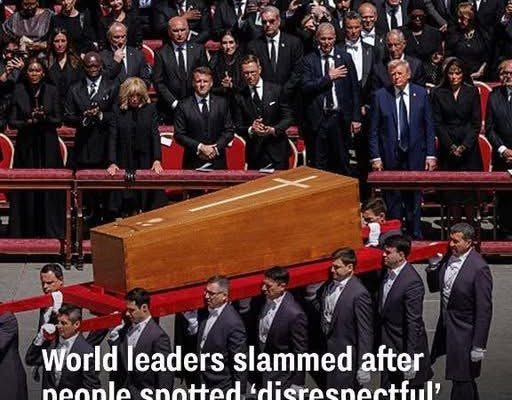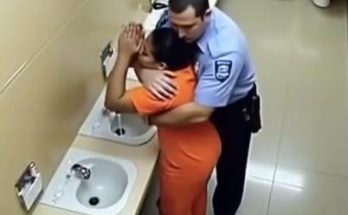Pope Francis, born Jorge Mario Bergoglio in Buenos Aires in 1936, spent his final months battling a series of escalating health issues. After a double pneumonia diagnosis in early March, he was hospitalized in Rome for nearly five weeks. Though he briefly returned to his residence at Casa Santa Marta, a sudden stroke followed by cardiac arrest on Easter Monday marked the end of his remarkable earthly journey.
His passing sent shockwaves across the globe.
As the first Jesuit pope and a tireless advocate for the marginalized, Francis reshaped the role of the papacy. His reign was defined by humility, compassion, and a powerful message of inclusion. Whether championing migrants, urging action on climate change, or calling for a Church “of and for the poor,” Pope Francis spoke to Catholics and non-Catholics alike. The grief that followed his death echoed the scale of mourning not seen since the passing of Pope John Paul II in 2005.
Honoring a Legacy: The Ritual of Farewell
The Vatican, known for its meticulous traditions, moved swiftly into centuries-old mourning protocol. The late pontiff’s body lay in state beneath the soaring dome of St. Peter’s Basilica, where a sea of pilgrims—nearly half a million—silently paid their respects over three solemn days.
On April 26, the world gathered.
Dignitaries, royals, religious leaders, and pilgrims converged on Rome. The Vatican’s Office of Liturgical Celebrations orchestrated every moment with ceremonial precision:
- The Open Catafalque: Draped in white linen, the pope’s coffin rested atop a raised platform, surrounded by flickering candles and silent prayers.
- Funeral Procession: A reverent cortege led from the basilica to Santa Maria Maggiore, where final interment would take place.
- Mourning Attire: Black, the traditional color of Catholic mourning, filled the square—cardinals in cassocks, leaders in formal wear.
- Diplomatic Protocol: World leaders were briefed in detail—every movement, gesture, and placement carefully choreographed to honor the moment’s gravity.
Despite the Vatican’s flawless planning, the sheer magnitude of the event made total control impossible. With an estimated 400,000 attendees, even minor breaches of etiquette stood out—and one moment in particular would soon spark controversy.
A Day of Reverence—and Controversy
By 9 a.m., the bells of St. Peter’s tolled softly. Under half-mast Vatican flags, Cardinal electors and bishops began the Requiem Mass beneath Michelangelo’s awe-inspiring ceiling. The congregation was a who’s who of global leadership:
- U.S. President Donald Trump and First Lady Melania Trump
- U.K. Prime Minister Sir Keir Starmer
- Ukrainian President Volodymyr Zelenskyy
- Irish President Michael D. Higgins
- Prince William, representing King Charles III
Amid haunting Gregorian chants and timeless readings about hope and resurrection, cardinals from every continent offered moving eulogies—remembering Francis not only as a pope but as a pastor who walked with the people.
As the procession wound through St. Peter’s Square en route to Santa Maria Maggiore, the final leg of Pope Francis’s journey began. Thousands lined the route, hands folded in prayer, many in tears. But amid the reverent atmosphere, cameras caught a moment that would spark global backlash: a gesture by several world leaders—widely seen as inappropriate—that quickly overshadowed the solemnity for some viewers.
What was intended as a sacred farewell became, in part, a flashpoint for criticism and debate.


A Sacred Farewell Disrupted: Moments of Controversy at Pope Francis’s Funeral
What was meant to be a serene and solemn farewell to one of the most beloved pontiffs in modern history was, at times, marred by lapses in decorum and digital-age distractions. Despite the Vatican’s careful orchestration of Pope Francis’s funeral rites, moments captured by ever-present cameras revealed a clash between sacred ritual and modern behavior.
4. Sacred Space or Selfie Spot? The Phone-Use Controversies
A Selfie That Stirred Outrage
A viral image of a Brazilian priest snapping a selfie in front of the pope’s open casket quickly ignited global backlash. The image, taken inside the hushed sanctity of St. Peter’s Basilica, was widely condemned as deeply inappropriate. The Vatican responded with a rare public rebuke:
“Visitors are invited not to take photos. This is a moment of prayer and respect,” a Vatican spokesperson told The Times.
Still, many ignored the solemn tone, raising smartphones to film, photograph, or livestream their final glimpse of the late pope.
Phones Raised During the Funeral Mass
Even during the most sacred moments of the funeral Mass, a sea of glowing screens emerged. Cameras caught clergy, deacons, and foreign dignitaries raising their phones to photograph Pope Francis’s gilded coffin as it passed by the high altar. Among them:
- An unidentified deacon, phone in hand, snapped pictures with Prince William visibly in the background.
- Several world leaders.
- U.S. President Joe Biden, who paused for a brief selfie with fellow officials.
Social media users were swift in their condemnation:
“They should be ashamed—taking pictures of a funeral is disrespectful.”
“A funeral is not a photo op. This is sacred space.”
Though some defended the use of phones as a reflection of modern public mourning, many argued that reverence and restraint should have prevailed.
5. The “Blue Suit” Debate: When Attire Speaks Volumes
Tradition Meets Tone-Deaf Fashion
Catholic funerary customs are steeped in symbolism, with black attire representing humility and shared grief. Yet, amidst the solemn sea of black and gray, former President Donald Trump stood out—literally—in a bright navy suit and blue tie.
“Of all the world leaders in black, Trump in blue looks like he wandered off a news anchor set,” one social media user quipped.
While Prince William’s darker navy was noted, it was the president’s vivid tone and contrast against tradition that drew the most ire. First Lady Melania Trump also sparked commentary for her uncharacteristically simple outfit and flat shoes, prompting bizarre online theories about a possible body double—claims lacking any credible basis.
6. Protocol Missteps: When Diplomacy Falls Short
Despite the presence of protocol officers and detailed guidance, several leaders were seen violating basic ceremonial norms:
- Premature Departures: President Trump and a handful of others exited the basilica immediately after the final blessing, foregoing customary condolences with Vatican officials.
- Casual Conversations: Cameras caught small groups of dignitaries chatting during lulls in the ceremony—raising eyebrows for what many viewed as an overly informal tone.
- Smartphone Use: Beyond photography, several attendees were seen checking messages or browsing during the service.
These moments were not merely personal lapses—they became powerful visual symbols, shared globally in real time, and often overshadowed the very message of humility and unity the pope had spent his life promoting.
7. The World Responds: A Chorus of Disappointment
Faithful Speak Out
Catholics and observers around the world voiced sorrow—not just at the pope’s passing, but at what they saw as a failure to honor his legacy with the dignity it deserved:
“A papal funeral is a sacred rite. It should not be turned into a tourist attraction.”
“Even heads of state must bow to the sanctity of this moment.”
Experts Weigh In
Dr. Maria Conti, a professor of diplomatic studies in Rome, remarked:
“Ceremonial law exists to create a level playing field. When leaders flout it, even unintentionally, they risk trivializing moments meant to unify and inspire.”
Retired U.S. protocol officer James Renner echoed the concern:
“Every gesture at a state funeral is a message. In a time of mourning, even a selfie can eclipse the spirit of the event.”
8. A Wake-Up Call for Global Diplomacy
The funeral of Pope Francis offers a poignant case study: how do we preserve ancient rituals in an age of instant gratification and digital impulse?
Striking the Right Balance
- Tech Limits: More visible signage, device collection points, or designated “no-phone zones” could restore reverence.
- Attire Standards: Issuing mourning ribbons or formal reminders could align diverse dress customs with traditional expectations.
- Pre-Funeral Briefings: Strengthening orientation for high-profile guests could prevent future diplomatic faux pas.
Conclusion: A Farewell Overshadowed, A Legacy Enduring
Pope Francis’s funeral was meant to be a global testament to humility, service, and faith. Yet the images that flooded news feeds and social media told a more complicated story—of reverence compromised by distraction, of tradition struggling to coexist with technology.
Still, even amid controversy, the spirit of Pope Francis endures—in the hearts of the faithful, in the Church he reformed, and in the quiet moments of prayer that rose above the noise.
In the end, perhaps the most lasting tribute to Francis won’t be found in viral images—but in a renewed global commitment to compassion, dignity, and the sacred stillness he so often called us back to.



